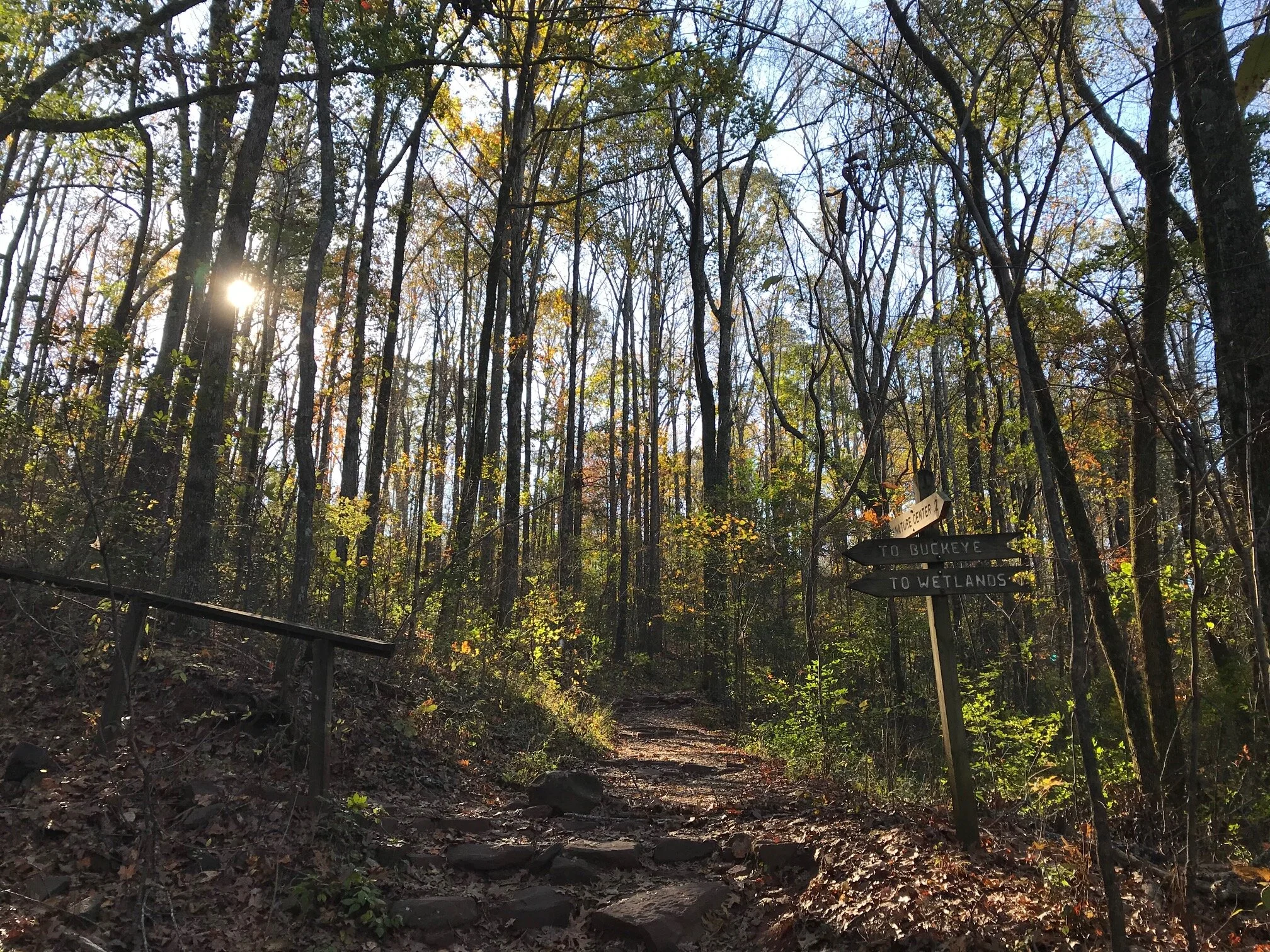English ivy (Hedera helix)
Photo by Michelle Reynolds
Another invasive plant that is easy to spot during the winter is English ivy (Hedera helix). Forming tightly woven carpets on the forest floor, the ivy twines and twists, strangling limbs of captive trees and choking out native species as it grows and spreads. This aggressive vine is hard to control, and it easily spreads from backyards abutting the nature preserve. We know how this plant escapes cultivation, so it is up to us to make wise choices for our landscapes.
How to help keep English ivy out of the forests:
1) Do not grow it in your yard;
2) if it is in your yard, you can replace it with native vines (coral honeysuckle, Carolina jessamine, partridgeberry, Virginia creeper, crossvine) and a diversity of easy-to-grow woodland plants (phlox, sedges, woodoats, columbine, ginger, foamflower, alumroot);
3) if you want to keep your ivy, work hard to keep it in check so the plants don’t escape to nearby woods.
English ivy is almost impossible to control and can be very difficult to get rid of.
To remove it from trees, clip all of the vines at the bottom of the tree, wait for the ivy to die before pulling the vines down. To get rid of the vines on the ground, continuously pull, pull, and pull. Be sure to bag up the ivy and roots and throw them in the trash.
Be vigilant about pulling any new shoots. In some cases, the application of herbicide may be needed for complete eradication.
English ivy (Hedera helix)
Photo by Michelle Reynolds














